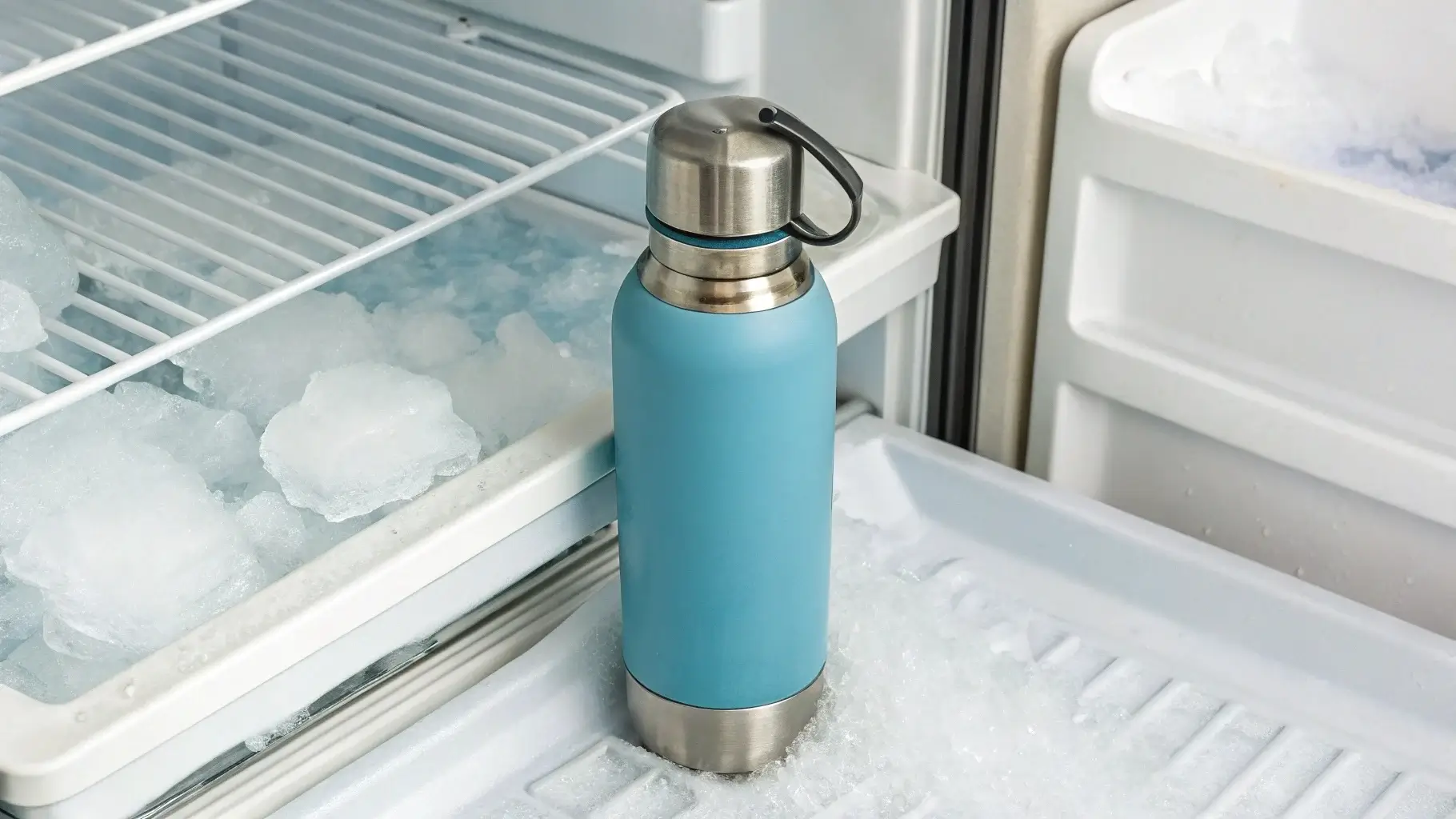
The question of whether it's safe to freeze your water bottle is one many people wonder about. What happens to the bottle and the water inside when frozen?
Freezing a water bottle can be convenient for keeping your drink cold, but there are important things to consider for safety and effectiveness.
Let’s explore whether putting your water bottle in the freezer is a good idea and what to watch out for.
Is It Safe to Put a Water Bottle in the Freezer?
Placing a water bottle in the freezer might seem like an easy way to keep your drink cool, but is it really safe?
It can be safe to freeze a water bottle, but it depends on the material and the type of bottle. Understanding these factors can help you avoid damage.
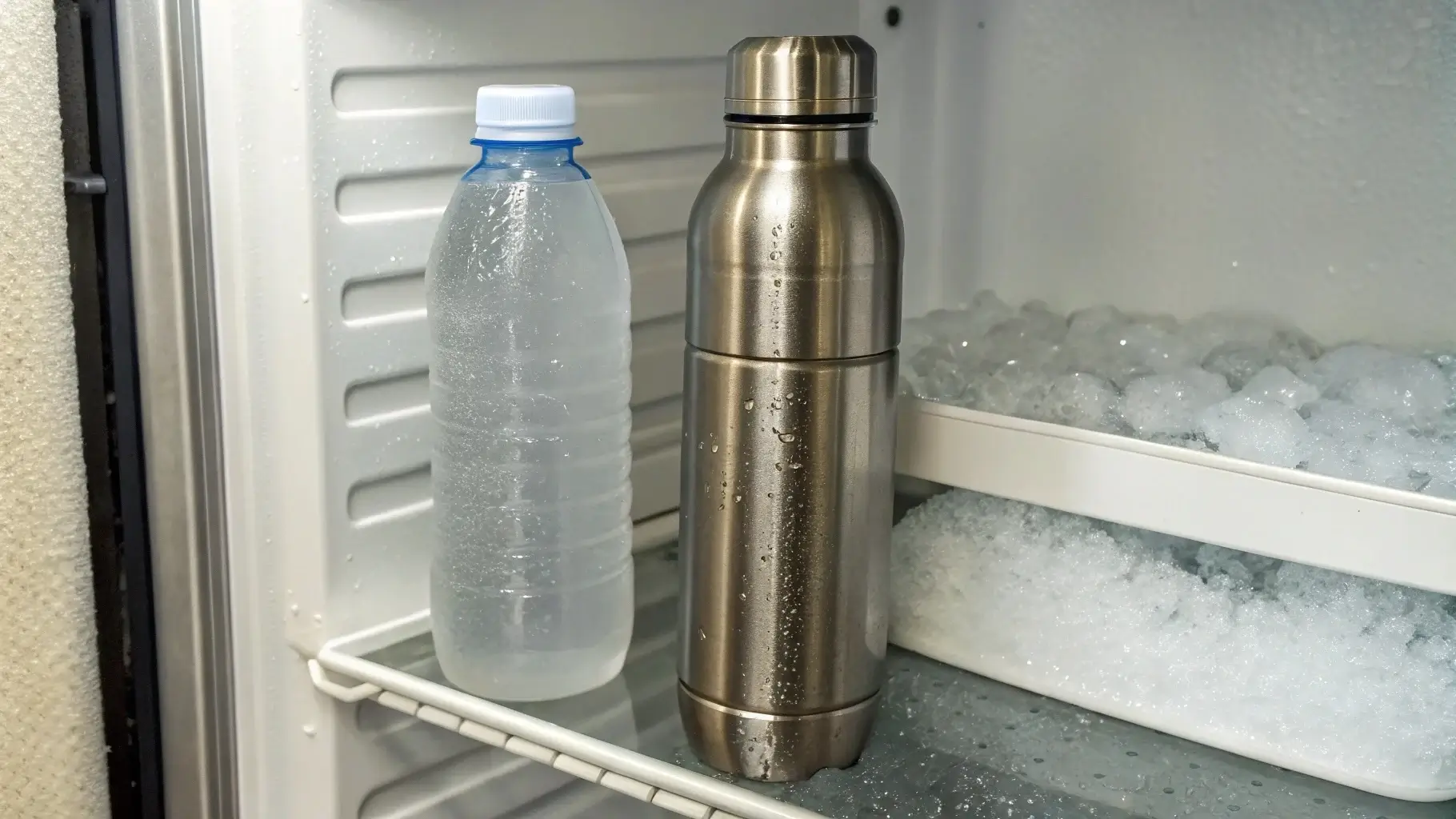
Freezing a water bottle is generally safe if you follow a few key rules. The biggest risk is if the bottle expands and bursts due to the freezing water. Here's how to do it safely:
Choose the Right Type of Bottle
Plastic bottles are generally safe to freeze as long as they aren't filled to the top. Water expands when it freezes, so it's important to leave some space to accommodate this expansion. On the other hand, metal bottles like stainless steel can be a bit trickier. Some designs are not made to withstand freezing temperatures, so it’s always best to check the manufacturer’s guidelines1.
Avoid Filling the Bottle Completely
One of the main reasons water bottles burst in the freezer is that the water inside expands as it freezes. Leaving space at the top of the bottle allows room for this expansion, reducing the risk of damage. If you don’t leave room, the bottle may crack or split open when the water turns to ice.
Consider the Material
Plastic and glass bottles can handle freezing if treated carefully, but not all materials are created equal. Stainless steel, for instance, doesn't expand like plastic when freezing. However, some insulated bottles2 could be negatively impacted if you freeze them. Always check the manufacturer’s recommendations to make sure the bottle can handle low temperatures.
Is It Okay to Put a Hydro Flask in the Freezer?
Hydro Flask bottles are well-known for their durability and excellent insulation, but can they go in the freezer?
While Hydro Flasks are made of high-quality stainless steel, putting one in the freezer can be risky. Here’s why.
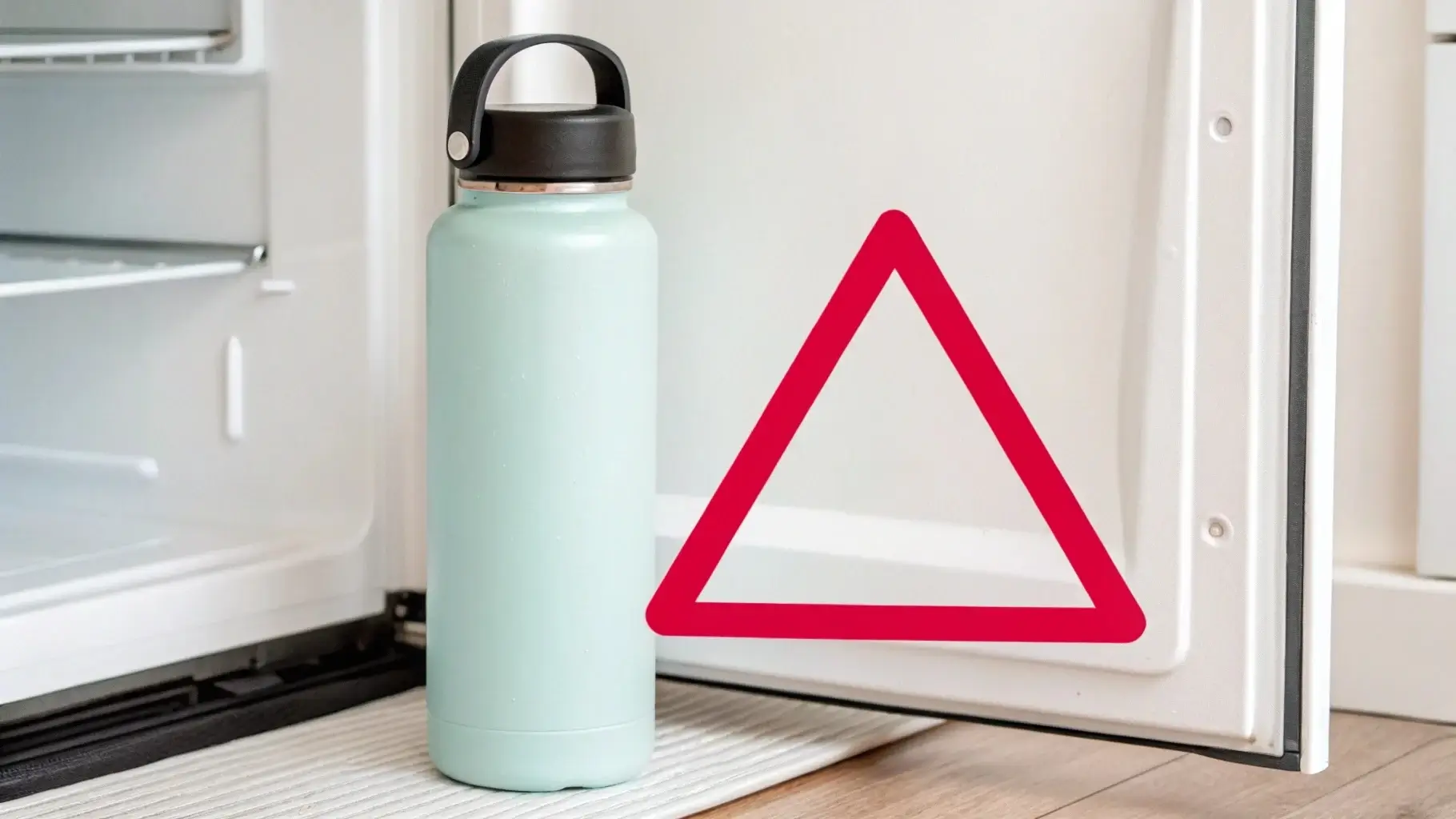
Hydro Flask bottles are insulated to keep drinks cold or hot for long periods. However, freezing these bottles can damage the vacuum-sealed structure, compromising the bottle's insulation3. Here's what you should consider:
Potential Damage to Insulation
Hydro Flasks are designed to maintain the temperature of liquids, but if the bottle gets too cold inside, it could damage the insulation. The cold temperature may cause the insulating layer to lose its efficiency, reducing the overall performance of the bottle.
Expansion of Ice Inside
Freezing the water inside a Hydro Flask can cause the liquid to expand, potentially damaging the bottle. Since Hydro Flasks don’t offer space to accommodate the expansion of the ice, it can crack or warp the bottle over time.
Alternative Uses for Freezing Hydro Flask
If you’re looking to freeze liquids in your Hydro Flask, it’s better to only partially fill the bottle or freeze liquids separately4 and pour them into the bottle later. This will help prevent any damage while still allowing you to enjoy cold drinks.
Can I Put an Insulated Bottle in the Freezer?
Many people love insulated bottles for their ability to keep drinks cold for hours, but what happens if you put one in the freezer?
Insulated bottles are designed for keeping liquids cold, but freezing them isn’t always a good idea. Let's break it down.
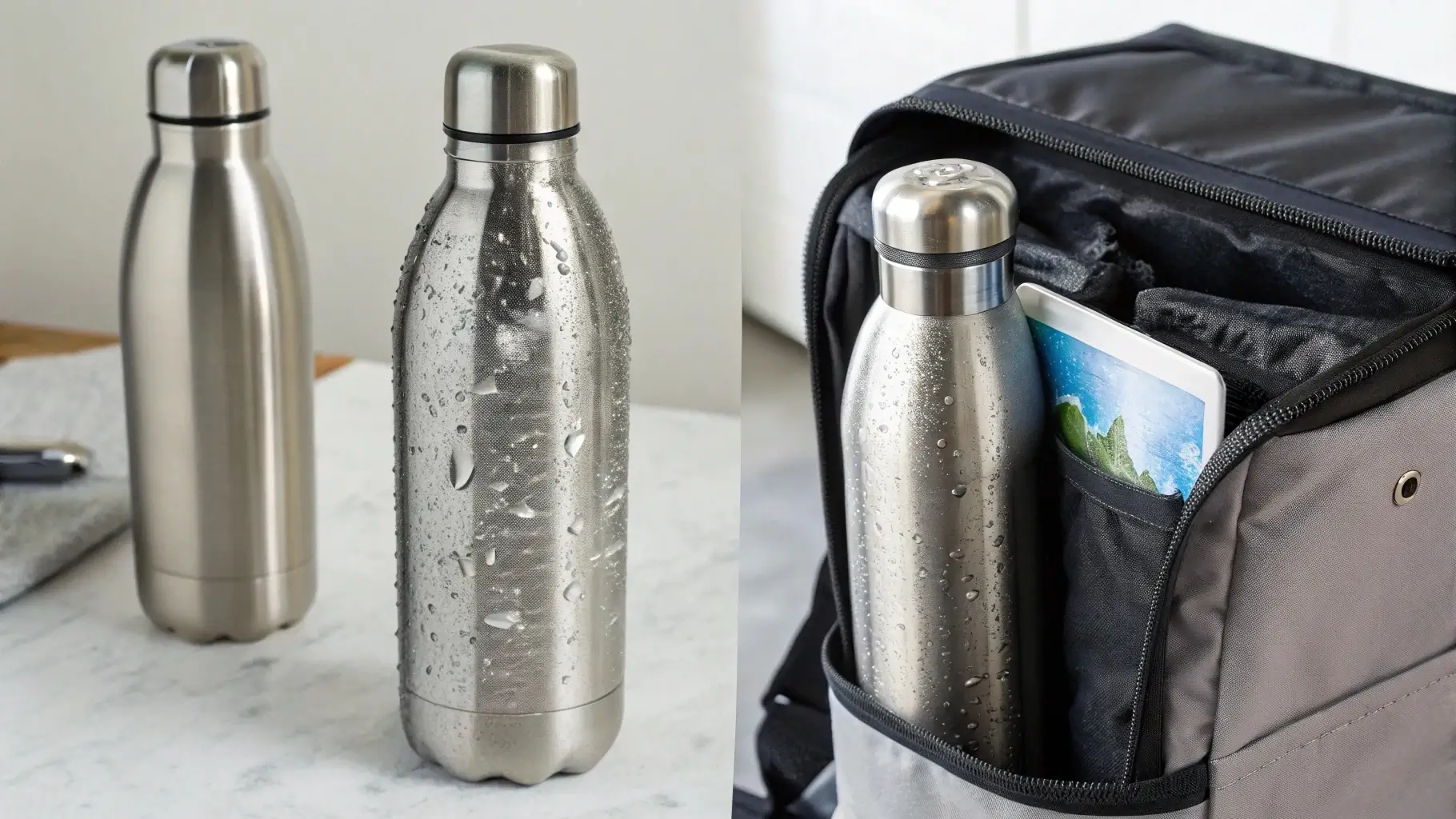
Insulated bottles work by creating a vacuum between two walls to keep the temperature stable. While they’re great for hot and cold liquids, they are not designed to handle extreme temperatures like freezing. Here’s why:
Vacuum Insulation and Freezing
The vacuum insulation inside many bottles, like those used by Yeti or S’well5, is intended to prevent heat transfer. However, freezing these bottles could cause the vacuum seal to break or weaken. The expansion of water as it freezes could also stress the bottle, potentially causing damage.
Risk of Bottle Damage
The main issue with freezing an insulated bottle is that water expands as it freezes. Since there’s no room inside for expansion, this pressure could crack or deform the bottle. For long-term use, it’s safer to store cold drinks at a chilled temperature rather than freezing them.
Consider the Bottle’s Design
If you have a stainless steel insulated bottle with a wide opening or one that’s meant for freezing, it may be safe to freeze under specific conditions. However, always check the product’s instructions6 or reach out to the manufacturer for advice on freezing.
How Does the Water Bottle Freeze Trick Work?
The "water bottle freeze trick" involves freezing water in a bottle and then flipping it to pour out the frozen liquid. It’s a popular method for instantly chilling drinks.
This trick works because of the physics of water freezing at different rates7. Here’s how it works.
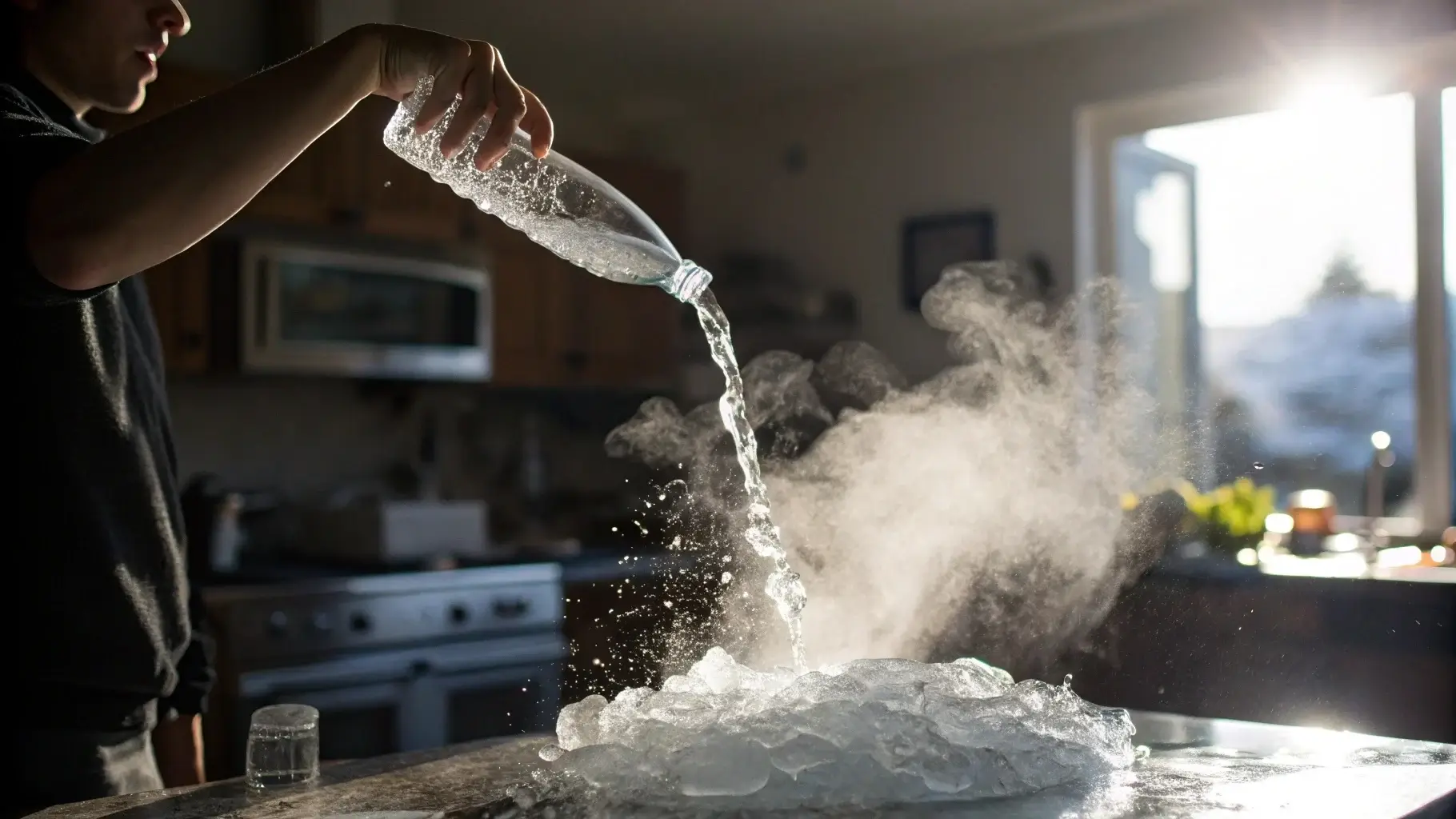
When you freeze water in a bottle, the water at the bottom freezes first. The rest of the liquid remains in a supercooled state. The bottle’s opening is sealed, but when you open it or pour it, the supercooled water instantly freezes and creates ice. This is how the trick works.
Supercooled Water
The key to the freeze trick is creating supercooled water8. Supercooled water is water that’s been chilled below freezing but hasn't turned into ice yet. This can happen when the bottle is very clean, and there’s no disruption to initiate the freezing process.
Performing the Trick
To perform the trick, put a bottle of water in the freezer for about 2-3 hours. The water will chill but won’t freeze solid. When you remove the bottle and open it, the water will immediately turn into ice. You can pour the supercooled water to see the freezing process in action.
Risk of Freezing the Bottle
While the freeze trick can be fun, it's important to use caution. Bottles that are sealed tightly can burst when the water freezes quickly. Be sure to leave some room in the bottle to avoid this risk.
Is It Unhealthy to Freeze Plastic Water Bottles?
Many people wonder if freezing plastic water bottles is harmful. Is it unhealthy to put plastic bottles in the freezer?
Freezing plastic water bottles is generally safe, but there are potential risks to consider.

Freezing plastic water bottles is not inherently unhealthy, but there are a few factors to be aware of:
Leaching of Chemicals
When plastic bottles are exposed to extreme temperatures, including freezing, some chemicals can leach into the water9. BPA (Bisphenol A) is a chemical found in many plastics, and when plastic is frozen or heated, it can seep into the water. This is why BPA-free bottles are recommended.
Risk of Bottle Damage
As plastic freezes, it can become more brittle, which increases the risk of the bottle cracking or breaking. A cracked bottle could leak or cause contamination, making it unsafe to drink from.
Using BPA-Free Bottles
To reduce the risks associated with plastic bottles, always choose BPA-free bottles10, and avoid freezing them frequently. If you must freeze a bottle, use one that is designed for freezing, or limit the amount of time it stays in the freezer.
Conclusion
While freezing a water bottle is possible, it's essential to consider the material and design of the bottle. Freezing can damage the bottle and affect the water inside, so always check the manufacturer’s guidelines to ensure safety.
-
Check if your water bottle is labeled freezer-safe before freezing ↩
-
Some insulated bottles may be damaged by freezing temperatures ↩
-
Freezing can compromise the vacuum insulation of Hydro Flasks ↩
-
Safely enjoy cold drinks without freezing the bottle itself ↩
-
Insulated brands like Yeti and S’well may not be freezer-safe ↩
-
Product instructions clarify whether freezing is safe for your bottle ↩
-
Understand why water doesn’t freeze evenly in sealed containers ↩
-
Learn how supercooled water forms and freezes instantly ↩
-
Extreme cold can cause harmful chemicals to leach from plastic ↩
-
BPA-free bottles are safer for freezing and long-term use ↩

